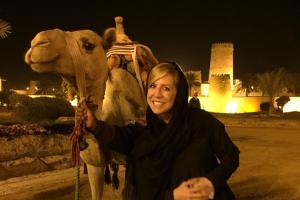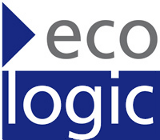December 12, 2016
BY PENNY GAGE
Five days after the presidential election I was on a plane to Riyadh, the capital of the Kingdom of Saudi Arabia, one of the most conservative and religious Muslim countries in the world. The trip was a welcome reprieve from the stress and media overdose of the election. Driving in from the airport in Riyadh late at night felt a bit like being in Las Vegas—a glittering oasis of high-rises surrounded by brown desert—only without the alcohol or pools. Bentleys and Maseratis slid past ritzy shopping malls full of stores like Gucci, Saks Fifth Avenue and Givenchy. According to OPEC, the prolific Saudi oil and gas sector accounts for about 50 percent of gross domestic product, and about 85 percent of export earnings fueling this extravagant economy.
I’d been invited to attend a conference for 1,500 young leaders from 65 countries focused on economic diversification and entrepreneurship—part of the Saudi Arabia’s new Vision 2030, a plan focused on sweeping public sector reforms and ambitious goals for the oil-dependent economy, spearheaded largely by 31-year-old Deputy Crown Prince Mohammed bin Salman. At its heart, the plan is trying to increase the contribution of the private sector from 40 percent to 65 percent of GDP and raise non-oil revenue from $43 billion to $266 billion. When Vision 2030 was unveiled in April, Prince bin Salman said: “We will not allow our country ever to be at the mercy of commodity price volatility or external markets.” As an Alaskan, that intrigued me. What could our state learn from the Kingdom about shifting away from economic dependence on petro-dollars? I also gained powerful insight into gender on the trip, glimpsing into a country where the rights of women are curtailed and their contributions—economic and otherwise—are discounted.
The need to create jobs in Saudi Arabia is crucial. Though wealthy, the country—and the Arab region more broadly—is struggling to confront a rising bubble of youth; 70 percent of Saudis are under 30 years old—and high unemployment. Economic diversification in the Arab States of the Persian Gulf is more than a buzzword, it’s an imperative. I heard the Arabic word for youth, shabaab, time and time again throughout the conference. The youth of the Arab region are increasingly tech-savvy, ambitious, and through conversations at the conference I heard a lot about young people yearning for more opportunities. Every attendee I spoke with at the conference had a smartphone. Snapchat and Instagram were a ubiquitous presence.
Throughout my time in Saudi, the role of gender made a significant impression. At the conference I looked around at Saudi women on “our side” of the segregated seating area and didn’t see much individual empowerment or networking occurring. The entrances to the conference were separated for men and women, as was the seating. Dozens of cameras and even a drone filmed the conference proceedings, but only the men’s faces. The majority of conference participants were Saudi, and we were told the segregation was mainly to appease the conservatives among them. Western women were required to wear an abaya (long sleeved, black gown), and it was strongly recommended we wear a hijab (head scarf) when in public. I had never covered myself like this before, and at first found it strange and suffocating. But after the newness wore off, I started to enjoy it. I’ve lived abroad before, and as a blonde American woman I’m familiar with the awkward feeling of being stared out. Here I felt anonymous, left alone, peeping out at the world unobserved. Plus, I didn’t have to put much thought into my outfit each day.
Surprises and incongruities abounded. During a break in the conference, I wandered into one of Riyadh’s many luxury malls and spotted a Victoria’s Secret. Curious, I peeked in. The women who worked there wore the niqab—a full-face veil with an opening for the eyes. Like most Saudi women, they were drenched in perfume. The visual effect was stunning: scantily clad mannequins wearing bright red bras and pink thongs beside flowing black fabric holding women inside.
On day two of the conference, a few American women and I ventured to the men’s side to sit (we had been assured by conference organizers that this was permissible). We felt hundreds of male eyes moving to avoid seeing us. Arab men wouldn’t sit within a couple rows of us. There was minimal interaction or networking between Arab men and women at the conference, and when it did occur, it was virtual with participants using the conference’s app to message one another.
At one of the coffee breaks, I forced some interaction with a Saudi man. He’d lived in the U.S. for 14 years and had moved back to Saudi Arabia six months earlier to work on Vision 2030. At one point, as he tried to convince me of Saudi’s liberalness and progress. “Look, a Saudi woman one meter from me!” he exclaimed, pointing to a woman in full burqa (a full body covering with mesh over the eyes) close to him speaking to two other women. “Look how far Saudi has come!” he was saying. For me, the point fell short: Two-thirds of Arab women are looking for a job and they are still unable to drive vehicles or travel without permission from a male guardian.
I’ve been to many global conferences like this one, and the content wasn’t anything monumental or transformational. It was flashy, with high-profile speakers like Bill Gates and the CEO of British Petroleum. But it was light on clear action items. However, the fact that the Saudi royal family was prioritizing the challenge of economic diversification was in itself breaking with tradition and admirable.
While the outspoken, American feminist in me felt muffled by the formless, anonymizing cloak and my inability to speak openly to men—the abaya and hijab made me feel protected, and I felt respected and watched out for by the Saudi men around me. Of course, you could chalk this up to the fact that I was an American woman who had the luxury of different treatment, but I got a glimpse of how Saudi women had their sacred, safe spaces, and strong bonds. I met outspoken ladies at the conference who seemed unphased by their lack of equal status with men. At one point when the conference broke out into small groups to brainstorm entrepreneurial activities, a group of women named their team “Women are Better than Men.” The declaration was as bold as it was excited, in an environment where small inroads are being made. Women recently gained the right to vote and run for local office in Saudi Arabia, and the Saudi royal family is said, anecdotally, to have more liberal views on gender. When women eventually rise up to claim more space beside Saudi men, I think the latter will be surprised by the strength and talent they possess.
I left Riyadh on a plane bound for Paris still wearing my abaya and hijab, shedding them mid-flight. As I deplaned in the Charles De Gaulle airport, I couldn’t stop staring at all the exposed female skin around me. It was the realization how normalized it is in the West to unabashedly look at the female form, which is so often on display. Tank tops and even exposed necks surprised me. I had covered myself in black for just three days, and it left me with a respect and acknowledgement of the agency that can come with covering; the option to chose how much of you can be publicly known.
In spite of all the millions being spent on Vision 2030—the grand conferences, consultant fees, studies, and flashy press conferences—the Saudi government has a long way to go. There remain significant barriers to entry for entrepreneurs, problems in accessing capital and challenges with bringing women into the workforce. I’m not convinced a modern economy is possible where dogma and tradition still relegate half the population to the far-side of the conference barrier. However, what drew me to travel 10,000 miles to Riyadh was the idea of a comprehensive plan. I greatly admire the fact that they’ve developed a broad-ranging roadmap with goals and a vision for the future. This is unprecedented in the region, and something that in Alaska our elected officials have not yet come around to: Developing a plan that sees beyond the next election cycle to diversify Alaska’s oil-based economy and inspire and empower young Alaskans.
Penny Gage—born in Pelican and raised in Sitka—now lives in Anchorage. She is a fellow in the Atlantic Council's Emerging Leaders in Environmental and Energy Policy (ELEEP) program, which took her on this trip to Saudi Arabia. The fellowship is a forum for the exchange of ideas, policy solutions, best practices and professional development for emerging North American and European leaders working on environmental and energy issues.
Location:
Riyadh, Saudi Arabia
Publication Type:






